Crystal Charges
Crystal Charges, commonly referred to simply as "Charges", are the source of ammunition for Crystal Charge firearms. Modern charges consist of a primary crystal core composed of resin mixed with a high percentage of soulstone powder. These cores are set into a drawn case made from a number of metals, including white gold, ferrosilver, bronze, steel, brass, or copper. If the charge features a bullet, the bullet is often made from soft metals such as lead and jacketed with similar materials. Charges in the past were made from solid soulstone carved into shape, and its case was cast from solid silver or gold.
Naming Conventions
Measurement Areas
Pictured above is the standard measurement areas used for chambering rifles and other guns. The C14.5x88mm charge is pictured. The machining of chambers on guns and rifles uses six areas of measurement.- Length, the overall length of the charge from the base of the rim to the tip.
- Rim Diameter, the widest point of the base.
- Rim Thickness, the distance between the base of the charge and the widest point, excluding the rim.
- Base Diameter, the widest point of the charge, excluding the rim.
- Depth diameter, the width of the point at which the charge's angle changes from side to tip.
- Tip/Opening Diameter, the diameter of the narrowest part of the charge, as measured at the top end.
Eastern Standard Designations
The Eastern Standard Charge Designation System, often simply referred to as "Eastern Standard", is the most commonly used system in the world, seeing widespread use in most nations on the eastern side of Maney, including the arms manufacturing giants of New Dendarin and Sterlina. The designations for charges are composed of three to five parts, depending on arrangement.- Various letters that describe features of the charge.
- Case mouth diameter in millimeters.
- Casing length in millimeters.
- A letter corresponding to its alignment, should it have one.
- Flat tip: Unmarked
- Conical Tip: C
- Funnel Tip: F
- Projectile: P
- Rimmed Casing: R
- Semi-Rimmed Casing: Sr
- Rimless Casing: Unmarked
- Belted Casing: B
Polustranya Measurements
Polustranyan Measurements, formerly used in a part of southern Bausable, is now only used in the nation of Novya Polustranya, though many civilian designers use a similar system. Names consist of three or more parts.- The diameter of the charge at its case mouth in lines (equal to one tenth of an imperial inch).
- A word usually designating its intended weapon system, or the company or individual that created it.
- A word preceded by a hyphen that describes the charge's features.
Charge Shapes
Mouth
Flat Tip
Flat tips are useful for vacating the charge in as little time as possible, keeping the bolt short and dense. This is useful for short range stopping power and creating large, deadly wounds. They also allow the maximum possible amount of space inside the casing to be taken up without increasing the overall length, a good quality in handgun charges.Cone Tip
Conical noses are optimal for long range purposes as the small, flat tip is excellent for keeping the shot's diameter small and its length long. This allows the bolt to maintain coherence, or focus, for the longest possible amount of time. As a tradeoff, the wounds they cause are quite small. They mostly rely on movement and constant exposure to a long, thin bolt to create cuts and gashes on living targets.Funnel Tip
Funnel tips are a middle ground, formerly favored by many militaries for their balance between charge capacity, discharge speed, and bolt diameter. They are also more inexpensive to create, as core resin may simply be poured into a casing as with flat tips, rather than needing to cast a core in a mold as with conical tips.Projectile
The typical dichotomy among arms manufacturers is whether a charge is "traditional" or "P-Type". At its simplest, whether or not a solid object is intended to be fired from the firearm or not. The earliest dedicated projectile charge were shotshells filled only one-third of the way with air aligned core while the rest is filled with other solid objects. Some of the earliest military projectile charges were the R11.6x58mm and RP11.6x46mm, produced by the then Soulshot Firearms company for the Hisakawa P11 used by guards and messengers in Utopia. Modern Air/Fire core projectile charges were introduced to warfare on a large scale in the AC1150s during the Eben/Ismo-Denidarian War as a cost saving measure, using brass or bronze cases instead of gold or silver alloys and an air/fire aligned soulstone core that creates gas pressure behind a soft metal projectile held at the mouth of the case. Charges that fire projectiles are referred to as "cartridges", rather than as charges. Many militaries today issue both P and F variants of their standard ammunition, each serving their own purpose. The P-Type Cartridge uses an air core, while the F-Type Charge uses a neutral core and lacks a bullet. The case is otherwise the same. Police organizations and civilians tend to prefer traditional charges for reusability and versatility, though in high-level competition, many prefer the challenge of compensating for wind drift and compensating for the drop inherent in projectiles.Case Head
Rimmed
A rimmed casing is useful for simplifying manufacturing of weapons as they are far easier to headspace, thus requiring less precision in the manufacturing of chambers. Problems begin to arise with vertical magazines and semi-automatic designs. If the charges are improperly staggered in the magazine, the rim of the charge at the top of the magazine could be behind the next, thus disabling it from moving forward out of the magazine and into the chamber, a phenomenon known as "rimlock".Semi-Rimmed
Semi-rimmed casings have both an extractor groove and a pronounced rim. They feature the ease of headspacing of rimmed casings, but allow deeper extractors making spent charges far less likely to get stuck in the chamber. They still suffer from the issues present with rimmed casings.Rimless
A rimless casing is useful for self-loading weapons. There is no protruding rim that can get caught on the next charge, and they are easy to load into vertical magazines. Headspacing the charge requires a surface for the charge's shoulder or case mouth to rest against, requiring both consistent weapon manufacturing, and consistent ammunition manufacturing.Belted
A belted case is the second possible midpoint between rimmed and rimless, featuring a possible headspacing point at the front of the belt, a protrusion above the rim and extractor grove, while not risking rimlock.Grooved
Grooved casings are casings with irregular tracks or otherwise odd markings or indentations in the case. They are used with various lugs in the chamber to lock the charge in place, or otherwise serve a functional purpose. Very few of this type were ever created, and only two achieved any success, though they are not similar to one another.Charge Alignments and their Uses
Neutral Alignment
Neutrally aligned charges fire cyan colored bolts that are used to inflict damage, destroying flesh and other non-magic-resistant materials for as long as it remains coherent.Air Alignment
Air aligned charges fire bolts of yellow light that impart kinetic energy or air pressure onto the target. These are often used for training, violent crowd control or non-lethal self defense purposes. Military P-type charges use wind cores to propel their bullets by way of air pressure.Darkness Alignment
Dark aligned charges fire either purple or desaturated blue/green bolts, and can either cause physical pain with no real damage, or stun the target, causing them to go limp and fall to the ground. Most often, the dark alignment is used to make the bolt travel far more quickly than standard bolts, at an average of 3500 feet per second (1067 m/s) as opposed to 1500 feet per second (305 m/s).Earth Alignment
Earth aligned charges are uncommonly seen, but fire green bolts. The most common military use of Earth aligned charges is in volley charges used by Exia and Bausable. These bolts are affected by gravity, unlike bolts fired from any other charge, allowing them to be arced over hills and other cover surfaces. They also maintain coherence over distance by drawing new energy from the world around it. These were quickly displaced by P-Type charges, but civilians use them as a reusable alternative.Fire Alignment
Fire aligned charges fire red-orange bolts that light flammable structures on fire, as well as cauterize wounds left on flesh.Light Alignment
Light aligned charges fire intensely white-blue bolts of light that burst on contact with a solid surface. These blasts release a massive flash that is used to temporarily blind the target.Water Alignment
Water aligned charges fire blue bolts of light that may have unpredictable effects, but most often are made to freeze or chill the target to slow it down and drain endurance.Capacity and Charge Fill
The mixture of resin and soulstone cannot be filled forever. As such, it features a maximum capacity. At that maximum in the standard ratio used by most nations, the energy produced amounts to a muzzle energy of roughly 1200 foot pounds per cubic centimeter of crystal core. At the maximum fill, charges have an audible hum, a brilliant glow, and massive destructive potential, but are prone to spontaneously cracking and venting. When this happens, the energy within the charge will spray from the crack, creating a blade of charge energy for several seconds, wildly spinning and jumping until it is empty. As this is quite dangerous, it is never offered commercially, and all charges sold to civilians feature disclaimers about the risks associated with such high fill levels. Standard military fill level ranges from 30% up to 70%. Civilian fills range between 10 and 80 percent, but due to the fact that they can be reused with the proper equipment to recharge them, they are often tailored to the user's own preferences.Long Gun Charges by Year of Invention
M956CC, A.K.A. 7.1mm Ivanovka Long R and 7.1mm Ivanovka Short R
Based on ancient Drow weapons forgotten for their cost, the Model AC956 Crystal Charge was created for the aforementioned BRM956, the first ever breech loading rifle. The very earliest versions had crude cast casings and roughly hewn cores, often breaking off at the case mouth, though this was still used despite its lower capacity in early handguns. Modern production of both 7.1mm Ivanovka Long R and 7.1mm Ivanovka Short R, as the rifle and pistol versions are called respectively, uses modern production techniques for civilian use. Both are popular for competition shooting, especially the latter for its small size and gentle recoil.Military Firearms Chambered for the Charge
- Ivanovka Breechloading Rifle Model AC956
- Ivanovka Breechloading Carbine Model AC960
- Ivanovka Breechloading Pistol Model AC962
Other Information (Long)
- Served From: AC956
- Case Length: 26.7 Millimeters
- Case Mouth Diameter: 7.11 Millimeters
- Overall Length: 65.1 Millimeters
- Charge Volume: 2.46 Cubic Centimeters / 0.15 Cubic Inches
- Maximum Muzzle Energy: 4002.4 Joules / 2952 Foot-Pounds
- Comparable Cartridges: .32 Winchester Special (Standard Fill: 60%) / .270 Winchester (Max)
Other Information (Short)
- Served From: AC956
- Case Length: 26.7 Millimeters
- Case Mouth Diameter: 7.11 Millimeters
- Overall Length: 27.8 Millimeters
- Charge Volume: 0.989 Cubic Centimeters / 0.6 Cubic Inches
- Maximum Muzzle Energy: 1609.1 Joules / 1186.8 Foot-Pounds
- Comparable Cartridges: .256 Winchester Magnum (Standard Fill: 60%) / .32-20 Winchester (Max)
Meri L7.8x64mm
The L7.8x64mm charge was created by the Meri in AC990 in an effort to compete with Sterlina's M956CC. Capable of producing around double the energy of the M956CC, it would remain in common usage for many years afterwards, going on to become the standard of South Bausable, later known as Novya Polustranya, and a supplemental chambering in Zeliph, not to mention becoming quite successful in civilian circles.Military Firearms Chambered for the Charge
- Model AC990 Rolling Block
- Model AC1140 Repeating Infantry Rifle
- Polustranyan 3.1 Line Rifle Model of AC1142
- Kizae Type 155 Revolver Carbine
- Kizae Type 156 Infantry Rifle
Other Information
- Served From: AC990
- Case Length: 64 Millimeters
- Case Mouth Diameter: 7.81 Millimeters
- Overall Length: 64 Millimeters
- Charge Volume: 4.916 Cubic Centimeters / 0.3 Cubic Inches
- Maximum Muzzle Energy: 7998.2 Joules / 5899.2 Foot-Pounds
- Comparable Cartridges: 9.3x68mm (Standard Fill: 60%) / .458 Lott (Max)
Kizae G9.3x52mm
One of two grooved charges to become militarily successful, the G9.3x52mm charge's grooves serve two purposes. At the front, the five small grooves help to find which side of the charge is the front, while the rear groove locks into a spring plunger to hold the charge into the chamber against the ejector. When the breech is opened, the plunger is lowered, allowing the ejector to push the charge rearwards out of the action. The case's walls were very thick. While this allowed an opening in the chamber for a unique ejection system, it also limited its capacity. While the external diameter of the charge is 12 millimeters, the interior diameter is only 9.3 millimeters. The massive rear groove somewhat future-proofed the design, allowing it to serve in Lameianis prototype self-loading carbines as a rimless case due to cheap surplus prices. A dedicated charge with a similar recoil impulse would be developed later.Military Firearms Chambered for the Charge
- Kizae Type 66 Infantry Rifle
- Kobeula Self Loading Carbine Model AC1167 Prototypes
Other Information
- Served From: AC1066
- Case Length: 51.8 Millimeters
- Case Mouth Diameter: 9.3 Millimeters
- Overall Length: 51.8 Millimeters
- Charge Volume: 3.053 Cubic Centimeters / 0.186 Cubic Inches
- Maximum Muzzle Energy: 4967.2 Joules / 3663.6 Foot-Pounds
- Comparable Cartridges: 6.5x52mm Carcano (Standard Fill: 50%) / 7mm Remington Ultra Magnum (Max)
SoulShot R8.7x71mm
R8.7x71mm was created in Sterlina by the arms commission to replace M956CC. The BRM956 was found to be too slow, so Soulshot Firearms company's SS1130-R was adopted as their standard P30 rifle. It was one of the earliest ferrosilver cased charges, and would serve honorably throughout the first Sterlina-Zeliph war and beyond. Attempts were made to update it to a P-Type charge, but they would not be compatible with older barrels. Newer rifle patterns such as the P30-B and P55 were already in service, so rebarreling old rifles was not seen as a necessary expenditure. It would be replaced in full by the P7.8x61mm in AC1155.Military Firearms Chambered for the Charge
- Sterlina P30 and P30-A
Other Information
- Served From: AC1130
- Case Length: 71 Millimeters
- Case Mouth Diameter: 8.66 Millimeters
- Overall Length: 71 Millimeters
- Charge Volume: 4.467 Cubic Centimeters / 0.273 Cubic Inches
- Maximum Muzzle Energy: 7267.7 Joules / 5360.4 Foot-Pounds
- Comparable Cartridges: .460 S&W Magnum (Standard Fill: 40%) / .375 Weatherby Magnum (Max)
P6.15x60mm "6mm Aserielle"
The Demons of the Under-World saw great promise in the projectile charge revolution. In particular, the warlord Lady Aserielle, who would commission rifle designs from among her people. It took a year and a half for the rifle to solidify into the Aserielle T122, and its cartridge was an extremely small bore for its time, with a bullet diameter of 6.15 millimeters. The bullet travels at 2980 feet per second and weighs 114.6 grains (908 meters per second, 7.425 grams). The original cartridge drawings and prototypes had a partially jacketed bullet that left its lead core exposed at the tip, allowing the bullet to expand and create devastating wound cavities thanks to its small size and immense speed. A white gold jacket was used to prevent the destruction of the projectile as the core was neutrally charged. Its case was made from ferrosilver to compensate. This was intended to combine the effects of projectile and traditional charges. Later production changed the manufacturing processes to more traditional brass or steel cases with full metal jacket projectiles with light materials such as wood or aluminum in the front third of the bullet to encourage tumbling.Firearms Chambered for the Charge
- Aserielle T122
Other Information
- Served From: AC1163 (122 6AE)
- Case Length: 59.7 Millimeters
- Case Mouth Diameter: 6.15 Millimeters
- Overall Length: 78.7 Millimeters
- Charge Volume: 2.355 Cubic Centimeters / 0.144 Cubic Inches
- Maximum Muzzle Energy: 3832.2 Joules / 2826.5 Foot-Pounds
- Comparable Cartridges: 9x53mm R (Standard Fill: 80%) / 9.3x57mm (Max)
Handgun Charges by Year of Invention
SoulShot PR9x16mm
Soulshot Firearms' PR9x16mm cartridge was used in their AC1103 revolver. It is quite underpowered, especially for its time, firing an 80 grain bullet at 1435 feet per second. Its use of a heeled bullet saved on size and machining, as it was intended for use in less expensive pocket revolvers.Firearms Chambered for the Charge
- SS1103-P
Other Information
- Served From: AC1103
- Case Length: 16.8 Millimeters
- Case Mouth Diameter: 8.3 Millimeters
- Overall Length: 23.7 Millimeters
- Charge Volume: 0.644 Cubic Centimeters / 0.039 Cubic Inches
- Maximum Muzzle Energy: 1048.4 Joules / 733.28 Foot-Pounds
- Comparable Cartridges: 9x19mm Parabellum (Standard Fill: 50%) / .22 Hornet (Max)
Denidarian Arms Company R10x43mm
The R10x43mm was created in AC1140 for the Denidarian Arms Company Revolver Model AC1140, or DAC-RM40. It replaced the decades-old compact revolver chambered for the 7.1mm Ivanovka Short, and the 12 millimeter Model 1082 revolver. It would be replaced by the PR10x37mm cartridge in AC1175, after a rearsenal program. Older stock of ammunition was retained due to compatibility with the newer weapons.Military Firearms Chambered for the Charge
- DAC-RM40
- NDAC-RM75
- NDAC-VPM1
- NDAC-PM84
Other Information
- Served From: AC1140
- Case Length: 43 Millimeters
- Case Mouth Diameter: 10 Millimeters
- Overall Length: 43 Millimeters
- Charge Volume: 3.142 Cubic Centimeters / 0.192 Cubic Inches
- Maximum Muzzle Energy: 5111.4 Joules / 3770 Foot-Pounds
- Comparable Cartridges: 7.62x39mm (Standard Fill: 40%) / .325 Winchester Short Magnum (Max)
Kizae F6.5x25mm
The F6.5x25mm charge served as the charge for the Type 51 Automatic Pistol, an experimental model used in Zeliph during the first Sterlina-Zeliph war. It was a generally unremarkable handgun charge capable of being loaded light for use in small blowback pistols, or hot for locked breech military style pistols, which it often was for use on the civilian market. Its case dimensions would go on to inspire the P9x20mm cartridge that would become standard for the Eldrowey Compact.Military Firearms Chambered for the Charge
- Kizae Type 51 Automatic Pistol
Other Information
- Served From: AC1151
- Case Length: 25 Millimeters
- Case Mouth Diameter: 6.5 Millimeters
- Overall Length: 25 Millimeters
- Charge Volume: 1.067 Cubic Centimeters / 0.065 Cubic Inches
- Maximum Muzzle Energy: 1732.7 Joules / 1278 Foot-Pounds
- Comparable Cartridges: 7.62x25mm Tokarev (Standard Fill: 50%) / .223 Remington (Max)
Kizae P9x20mm
P9x20 was created after the Sterlina-Zeliph war in AC1160 for the Type 160 Automatic Pistol, following the trend of adopting projectile cartridges. Its case was derived from the F6.5x25mm charge, this time with a thinner walled bronze case and cupronickel jacketed 84 grain, or 5.46 gram, lead bullet. The two are interchangeable as far as being able to be chambered, but not being able to be fired. F6.5x25mm may be fired in a P9x20mm, as it is sub-caliber, but a P9x20mm cannot be fired in an F6.5x25mm, as the bore diameter is 2.5 millimeters too small. This led to the eventual phasing out of dedicated F6.5mm chambers. Militaries across the known world adopted it, including Zeliph, Greater and New Amazonia, the Eldrowey Compact nations of Ismere, Ebenland, New Dendarin, Dagora, and West Montase auxiliary in Novya Polustranya, Exia, and Bausable.Military Firearms Chambered for the Cartridge
- Kizae Type 160 Automatic Pistol
- Amazon T85AP
- Gelbmann P85
- New Dendarin P1
- Zeliph Precision Works Machine Pistol 9
- Ivanovka M80/9
Other Information
- Served From: AC1160
- Case Length: 20.3 Millimeters
- Case Mouth Diameter: 9 Millimeters
- Overall Length: 26.9 Millimeters
- Charge Volume: 0.766 Cubic Centimeters / 0.047 Cubic Inches
- Maximum Muzzle Energy: 1732.7 Joules / 1278 Foot-Pounds
- Comparable Cartridges: .380 ACP to .45 GAP (Standard Fill: 25% to 60%) / .17 Remington (Max)
11.3mm Exian Rimmed
The 11.3x37mm Exian P-Type revolver cartridge was developed for use in the United Exian Weaponsmiths Revolver Model AC1170, a large double-single action revolver with a swing out cylinder and classic styling, leading to it being underestimated by its opponents. It was large and recoiled intensely, firing a 248 grain bullet at 1870 feet per second(15.9 grams at 570 meters per second), it was adequate for the physically imposing Drow, but a bit much for many humans to handle, leading to a lighter cartridge being used in Bosabil's Model AC1170 revolver.Military Firearms Chambered for the Cartridge
- United Exian Weaponsmiths M70 Revolver
Other Information
- Served From: AC1170
- Case Length: 36.8 Millimeters
- Case Mouth Diameter: 11.33 Millimeters
- Overall Length: 47.3 Millimeters
- Charge Volume: 2.67 Cubic Centimeters / 0.163 Cubic Inches
- Maximum Muzzle Energy: 4344 Joules / 3204 Foot-Pounds
- Comparable Cartridges: .401 Winchester Self-Loading (Standard Fill: 60%) / .45 Raptor (Max)
11.3 Bosabil Rimmed, A.K.A. 4.4 Line M70 R
The shorter alternative to the Bosabil 11.3mm cartridge, PR11.3x27mm, was used in the Bosabil M70 Officer's Revolver, a high quality, nickel plated, gate-loading, five shot revolver issued to high ranking officers in Bosabil. Upon the outbreak of the war with New Dendarin in AC1182, the revolver would be produced at a lower quality level for general issue alongside a semi-automatic handgun in a similar cartridge. The same cartridge and revolver would serve in Novya Polustranya until their adoption of a P9x20mm pistol from Zeliph. It fires a 226 grain bullet at 1302 feet per second (14.63 grams at 396.8 meters per second)Military Firearms Chambered for the Cartridge
- Bausable M70 Revolver
- Polustranya 4.4 Line Revolver, Model AC1170
Other Information
- Served From: AC1170
- Case Length: 26.9 Millimeters
- Case Mouth Diameter: 11.33 Millimeters
- Overall Length: 35.4 Millimeters
- Charge Volume: 1.774 Cubic Centimeters / 0.108 Cubic Inches
- Maximum Muzzle Energy: 2886.3 Joules / 2128.8 Foot-Pounds
- Comparable Cartridges: .35 Winchester Self-Loading (Standard Fill: 40%) / 6.5x57mm Mauser (Max)
New Dendarin Arms Company PR10x37mm
PR10x37mm was the handgun cartridge created by the New Dendarin rearsenal program in AC1175, replacing the R10x43mm charge. Launching a 157 grain bullet at 2090 feet per second, its power was fearsome. In addition to becoming popular with civilian big game hunters in both rifles and handguns, it would remain standard in both revolvers and magnum automatic pistols until AC1205, when it was replaced by the P9x20mm.Military Firearms Chambered for the Cartridge
- DAC-RM40
- NDAC-RM75
- NDAC-VPM1
- NDAC-PM84
Other Information
- Served From: AC1175
- Case Length: 37.4 Millimeters
- Case Mouth Diameter: 10 Millimeters
- Overall Length: 43 Millimeters
- Charge Volume: 2.11 Cubic Centimeters / 0.128 Cubic Inches
- Maximum Muzzle Energy: 3435 Joules / 2533 Foot-Pounds
- Comparable Cartridges: 7.62x39mm (Standard Fill: 60%) / .500 S&W Magnum (Max)
== OLD INFO ==
L10.7x15mm Charge
The L10.5x15mm charge was invented for use in the Kizae Model M71 Rotary Cylinder Rifle, and specifically intended to produce more destructive energy than the G8.81x14.5mm charge used against Zeliph in the First Sterlina-Zeliph War. The sheer strength of the charge and intense, painful recoil when paired with hard wooden stocks eventually warranted the addition of spring assisted straight stocks to the M71, being redesignated as the M71/84.Firearms Chambered for the Charge
- Kizae Arms Manufacturing Company Type 171 Rotary Cylinder Rifle
- Kizae Arms Manufacturing Company Type 184 Heavy Rifle
Other Information
- Created: AC1170
- Charge Volume: (TBD) Cubic Centimeters / (TBD) Cubic Inches
- Maximum Muzzle Energy: (TBD) Joules / (TBD) Foot-Pounds
- Standard Fill: Standard Fill: (TBD) Joules / (TBD) Foot-Pounds ((TBD)%)
LC8.05x7.1mm Charge
The LC8.05x7.1mm charge is a modified 8.05x7.1mm charge and was developed over time, used in several prototype designs by Viktoriya Ivanovka over the decades. The charge would see official adoption by Exia and Bausable as the ammunition for the Ivanovka M1179 and the later Ivanovka M1180. The overall capacity was slightly less than it's ancestor's, but the range was increased due to the smaller conical tip and casing length.Firearms Chambered for the Charge
- Ivanovka Repeating Rifle Model AC1180 Light
Other Information
- Created: AC1150s
- Charge Volume: (TBD) Cubic Centimeters / (TBD) Cubic Inches
- Maximum Muzzle Energy: (TBD) Joules / (TBD) Foot-Pounds
- Standard Fill: Standard Fill: (TBD) Joules / (TBD) Foot-Pounds ((TBD)%)
C7.25x7.8mm Charge
These charges are a further evolution of the 8.05x7.1 charge, now with smooth sides for easier use in self-loading rifles, and 10% shorter, but 10% wider overall, increasing the charge capacity by approximately 10%. They were intended for use by the Ivanovka M1184 and M1185 rifles.Firearms Chambered for the Charge
- Ivanovka Repeating Rifle Model AC1184 Aquatic
- Ivanovka Self-Loading Rifle Model AC1185 Light Prototype
Other Information
- Created: AC1184
- Charge Volume: (TBD) Cubic Centimeters / (TBD) Cubic Inches
- Maximum Muzzle Energy: (TBD) Joules / (TBD) Foot-Pounds
- Standard Fill: Standard Fill: (TBD) Joules / (TBD) Foot-Pounds ((TBD)%)
C7.72x12.4mm Charge
The C7.72x12.4 charge is used in the heavy variants of the Ivanovka M1179 and 1180 as well as the later 1186 self-loading rifle, a charge with more power, but also more recoil. It uses a crimped case mouth to hold the charge's crystal core within rather than smooth sided cases and adhesive, as well as a tapered conical nose to smooth the flow of the bolt as it leaves the crystal, forcing it to be straighter as it leaves the charge.Firearms Chambered for the Charge
- Ivanovka Repeating Rifle Model AC1180 Heavy
- Ivanovka Self-Loading Rifle Model AC1186
Other Information
- Created: AC1179
- Charge Volume: (TBD) Cubic Centimeters / (TBD) Cubic Inches
- Maximum Muzzle Energy: (TBD) Joules / (TBD) Foot-Pounds
- Standard Fill: Standard Fill: (TBD) Joules / (TBD) Foot-Pounds ((TBD)%)
C8x13.6mm Charge
These charges were created in Sterlina for use in the SS1181-R. No reason was given for the decrease in size, but the most likely explanation was to carry more charges in a similarly sized magazine to the SS1155-R line. Due to espionage and prototypes being stolen, the charge is also in use in the Kobeula 82 rifles used by The Lameianis Confederation.Firearms Chambered for the Charge
- Soulshot Model AC1181 Rifle
- Kobeula 82
Other Information
- Created: AC1174 - 1176
- Charge Volume: (TBD) Cubic Centimeters / (TBD) Cubic Inches
- Maximum Muzzle Energy: (TBD) Joules / (TBD) Foot-Pounds
- Standard Fill: Standard Fill: (TBD) Joules / (TBD) Foot-Pounds ((TBD)%)
P7.03x9.65mm(6.35mm) Charge
In the image above, two new measurements have been added, with a third relabeled. "PD" refers to projectile diameter. "ND" refers to the diameter of the case's neck. "CL" Refers to the length of the case after the bullet has been fired. These charges come from the fledgeling nation of Great Amazonia and are unique in their day, having a bottleneck shape, and requiring the invention of a new designation letter due to their solid projectile. They were intended for use in stolen but modified Sterlinian rifle designs that they designated the M1 Livinda, named for The Planar World's Shaper Immortal of Life. Had they not stolen it, it may have in time become the next SS-R model, quite possibly as early as AC1184 or AC1185. When fired, the wind-aligned bolt impacts the rear of the bullet and creates air pressure inside the casing, sending the bullet forwards. The air pressure allowed a gas system to operate the bolt rather than relying solely on spring pressure. The defensive shielding employed by the combat mages of Zeliph cannot deflect or slow solid projectiles, as their shielding was intended to deflect magical energy. The rest of the world has not yet made their opinions clear on the use of metal projectiles, having used magical energy for over 200 years before the solid projectile resurfaced in the modern day, as the crossbow bolt and arrow were replaced by crystal charge bolts. If they are not outlawed and sanctioned against, they could change modern warfare, making the ferrosilver armor fielded by most nations obsolete.Firearms Chambered for the Charge
- M1 Livinda
Other Information
- Created: AC1183
- Charge Volume: (TBD) Cubic Centimeters / (TBD) Cubic Inches
- Maximum Muzzle Energy: (TBD) Joules / (TBD) Foot-Pounds
- Standard Fill: Standard Fill: (TBD) Joules / (TBD) Foot-Pounds ((TBD)%)
Handgun Charges in Modern Military Use
L4.31x10mm Charge
The L4.31x10mm charge used by the New Dendarin Arms Company Revolver Model AC1175, or NDAC-RM75, was intended to be a downsized variant of the L4.31x11.1 charge employed by the previous service revolver, the Denidaria Arms Company Revolver Model AC1140. It was 10% narrower, but remained the same length as the previous charge. It was greatly successful, and quite powerful for a handgun. It would also later be used by the NDAC Valchen Pistol Model 1, a semi-automatic pistol fielded by New Dendarin's military in AC1181, following the release of the Ivanovka Model AC1180 handgun in use by Exia and Bausable.Firearms Chambered for the Charge
- New Dendarin Arms Company Revolver Model AC1175
- New Dendarin Arms Company Valchen Pistol Model 1
Other Information
- Created: AC1175
- Charge Volume: (TBD) Cubic Centimeters / (TBD) Cubic Inches
- Maximum Muzzle Energy: (TBD) Joules / (TBD) Foot-Pounds
- Standard Fill: Standard Fill: (TBD) Joules / (TBD) Foot-Pounds ((TBD)%)
2.5x10mm Charge
These charges were simply intended to serve as a small handgun round with no frills or special features, invented on the spot for the new Ivanovka Pistol Model AC1180 from Viktoria Ivanovka in Bausable and Exia. The royalty of both nations requested a handgun to accompany their new service rifles, and the design put forward was extremely simple and functional. There was a hint of inferiority from New Dendarin when this weapon was released, leading to the design of the NDAC-VPM1 only a year later. The weapon, and by extension its charges, are very popular in the civilian market for personal defense and marksmanship.Firearms Chambered for the Charge
- Ivanovka Pistol Model AC1180
Other Information
- Created: AC1180
- Charge Volume: (TBD) Cubic Centimeters / (TBD) Cubic Inches
- Maximum Muzzle Energy: (TBD) Joules / (TBD) Foot-Pounds
- Standard Fill: Standard Fill: (TBD) Joules / (TBD) Foot-Pounds ((TBD)%)
Obsolete and Civilian Charges
8.05x7.1mm Charge
While it was not called such when it was first produced in AC956, based on ancient and then illegal Drow weapons of mass destruction, these were the first crystal charges ever produced by a young Viktoriya Ivanovka for her single-shot lever-action rolling-block BRM956 and BCM960. The casing was often crude, as precision machining was not easily done with the state of disrepair the world's infrastructure was in, and the crystal itself was rough-hewn and readily snapped off at the case edge. These broken charges would be designated the 2.76x7.1mm charge used in the later BPM962. These are often reproduced in much higher quality, used in commercially available weapons for the purposes of hunting and target shooting.Firearms Chambered for the Charge
- Ivanovka Breechloading Rifle Model AC956
- Ivanovka Breechloading Carbine Model AC960
- Ivanovka Breechloading Pistol Model AC962
Other Information
- Created: AC956
- Charge Volume: 0.368 Cubic Centimeters / 0.0224 Cubic Inches
- Maximum Muzzle Energy: 1196.5 Joules / 882.5 Foot-Pounds
- Standard Fill: 847 Joules / 625 Foot-Pounds (71%)
- Comparable Cartridges: .357 Magnum (at standard) / .35 Winchester Self-Loading (at max)
2.76x7.1mm Charge
Beginning as broken 8.05x7.1mm charges, these became standard for use in the shortened pistol-sized version of the BRM956, the BPM962, due to their reduced recoil better suiting one-handed operation. It only had one-third the internal space of the undamaged charge, but was useful for indoor combat often seen by cult hunters and strike hounds employed by the Purists of the day. These are often reproduced for modern target shooting due to their low capacity crystals.Firearms Chambered for the Charge
- Ivanovka Breechloading Rifle Model AC956
- Ivanovka Breechloading Carbine Model AC960
- Ivanovka Breechloading Pistol Model AC962
Other Information
- Created: AC956
- Charge Volume: 0.121 Cubic Centimeters / 0.0074 Cubic Inches
- Maximum Muzzle Energy: 393 Joules / 290 Foot-Pounds
- Standard Fill: 275 Joules / 203 Foot-Pounds (70%)
- Comparable Cartridges: .22 Long Rifle (at standard) / .38 Special (at max)
G5.18x12mm Charge
These charges were used by the Kizae Rifle Model AC1095/30, a single-shot trapdoor-action rifle. They featured deep cutouts on the rear of the casing intended to lock into lugs in the chamber to stabilize the charge, as well as serrations to ease in seating the charge in adverse weather conditions where water may make them slippery.Firearms Chambered for the Charge
- Kizae Arms Manufacturing Company Rifle Model AC1095/30
Other Information
- Created: AC1095
- Charge Volume: (TBD) Cubic Centimeters / (TBD) Cubic Inches
- Maximum Muzzle Energy: (TBD) Joules / (TBD) Foot-Pounds
- Standard Fill: Standard Fill: (TBD) Joules / (TBD) Foot-Pounds ((TBD)%)
G8.81x14.5mm Charge
These charges were developed with one goal in mind. To overwhelm the defensive shielding employed by combat mages in Zeliph. The casing walls were thin, which allowed more crystal capacity, and made use of cutouts to lock them into lugs on the inner surface of a hollow bolt found in the host rifle, the SS1155-R. The thin, forked casings often warped and bent if improperly handled or ejected, causing jams and making the casings near useless for recycling. They proved reliable enough to cause the war to end in a white peace, but not enough to see continued use, eventually being replaced by a more traditional smooth walled casing variant. These older charges could theoretically be fired by the updated rifles, but they may not extract spent charges every time, so it is not recommended.Firearms Chambered for the Charge
- Soulshot Model AC1155 Rifle
Other Information
- Created: AC1155
- Charge Volume: 7 Cubic Centimeters / 0.427 Cubic Inches
- Maximum Muzzle Energy: 22761.5 Joules / 16788 Foot-Pounds
- Standard Fill: Standard Fill: 5278.2 Joules / 3893 Foot-Pounds (23.2%)
- Comparable Cartridges: .300 Win Mag (at standard) / .50 BMG (at max)
L4.31x11.1mm Charge
The L4.31x11.1mm charge was the predecessor to the L4.31x10mm charge. They were considerably more powerful and had much harsher recoil than the latter, especially given the high bore axis of revolvers with a 12 o'clock barrel position. The DAC-RM40 that it was originally used in often suffered from both snapped handles and snapped frames. These were remedied by reinforcing the handle, and adding an upper bar to the frame of the revolver, increasing the rigidity of the entire design. Following the abandonment of these charges, metal and plastic adapters were made for the DAC-RM40 so they could chamber the L4.31x10mm charges that were in active service with the military.Firearms Chambered for the Charge
- Denidarian Arms Company Revolver Model AC1140
Other Information
- Created: AC1170
- Charge Volume: (TBD) Cubic Centimeters / (TBD) Cubic Inches
- Maximum Muzzle Energy: (TBD) Joules / (TBD) Foot-Pounds
- Standard Fill: Standard Fill: (TBD) Joules / (TBD) Foot-Pounds ((TBD)%)
C8.81x14.5mm Charge
These are the modern smooth walled variants of the obsolete G8.81x14.5mm charges. Their conical nose makes them accurate and keeps ther discharge coherent at long ranges, and their smooth walled casing suffers less damage than the forked design of their predecessor. While Sterlina abandoned the charge in AC1175 in favor of the C8x13.6 charge, New Dendarin supported them in everything from infantry carbines to sniper rifles until their survival rifle charge was adopted as standard in AC1182, and they diversified their arsenal in that charge from that point onwards.Firearms Chambered for the Charge
- Soulshot Model AC1155 Series Rifles
Other Information
- Created: AC1157
- Charge Volume: 7 Cubic Centimeters / 0.427 Cubic Inches
- Maximum Muzzle Energy: 22761.5 Joules / 16788 Foot-Pounds
- Standard Fill: Standard Fill: 5278.2 Joules / 3893 Foot-Pounds (23.2%)
- Comparable Cartridges: .300 Win Mag (at standard) / .50 BMG (at max)
C8.81x11mm Charge
These charges were created to produce milder recoil for use in the prototype NDAC-CM83 than the full-sized C8.81x14.5 charge used by the last model of carbine. These changes were made in response to growing adoption of smaller, milder charges fired more rapidly in favor over large, powerful ones fired slowly. It is nearly identical to the previous charge, only its diameter was made any smaller, having been decreased by 25% overall. This charge was later abandoned in favor of New Dendarin's preexisting Survival Rifle cartridge.Firearms Chambered for the Charge
- New Dendarin Arms Company Carbine Model AC1183
- Created: AC1182
- Charge Volume: 3.93 Cubic Centimeters / 0.24 Cubic Inches
- Maximum Muzzle Energy: 12792 Joules / 9435 Foot-Pounds
- Standard Fill: Standard Fill: 4300 Joules / 3171 Foot-Pounds (33.6%)
- Comparable Cartridges: 8x57mm Mauser (at standard) / .416 Barrett or .700 Nitro Express (at max)
7.86x13.2mm Charge
The 7.86x13.2mm charge was created for use in the Von Strauss M60 Repeating Rifle, and was a rimless version of the previous L7.86x13.2mm charge used by the M35 and M50 rifles. This was done to accommodate the vertical magazine, but was otherwise identical. It saw the bulk of its military service life during the Expansion Conflicts in AC1181, but fell out of use as the nation that produced them was absorbed into New Dendarin. It remains a popular chambering in civilian sporting rifles produced by Von Strauss.Firearms Chambered for the Charge
- Jannike von Strauss Repetiergewehr Modell AC1135/60 Kurz
- Jannike von Strauss Selbstladegewehr Modell AC1135/81
- Optional chambering in Jannike von Strauss civilian rifles
Other Information
- Created: AC1170
- Charge Volume: (TBD) Cubic Centimeters / (TBD) Cubic Inches
- Maximum Muzzle Energy: (TBD) Joules / (TBD) Foot-Pounds
- Standard Fill: Standard Fill: (TBD) Joules / (TBD) Foot-Pounds ((TBD)%)
Experimental Charges
C12.7x14.5mm Charge
These charges were an early response by Sterlina to the Kizae Rotary Rifle's L10.7x15 charges. They were essentially intended to show Zeliph that Sterlina could make larger, higher capacity charges, featuring roughly 10% more crystal volume. The intense recoil and expensive casings prevented the rifle from seeing widespread production, but they would be used in heavy machine guns. Sterlina instead went on to design the P7.03x9.65mm(6.35mm) charge, though the credit for its invention was not taken by them due to generally adverse reactions to its existence.Firearms Chambered for the Charge
- Soulshot Model AC1172 Heavy Prototypes
Other Information
- Created: AC1172
- Charge Volume: 12.48 Cubic Centimeters / 0.761 Cubic Inches
- Maximum Muzzle Energy: 40580 Joules / 29930 Foot-Pounds
- Standard Fill: Standard Fill: 18710 Joules / 13800 Foot-Pounds (45.6%)
- Comparable Cartridges: 12.7×108mm Russian (at standard) / 14.9mm SOP or 20mm Vulcan (at max)
Remove these ads. Join the Worldbuilders Guild

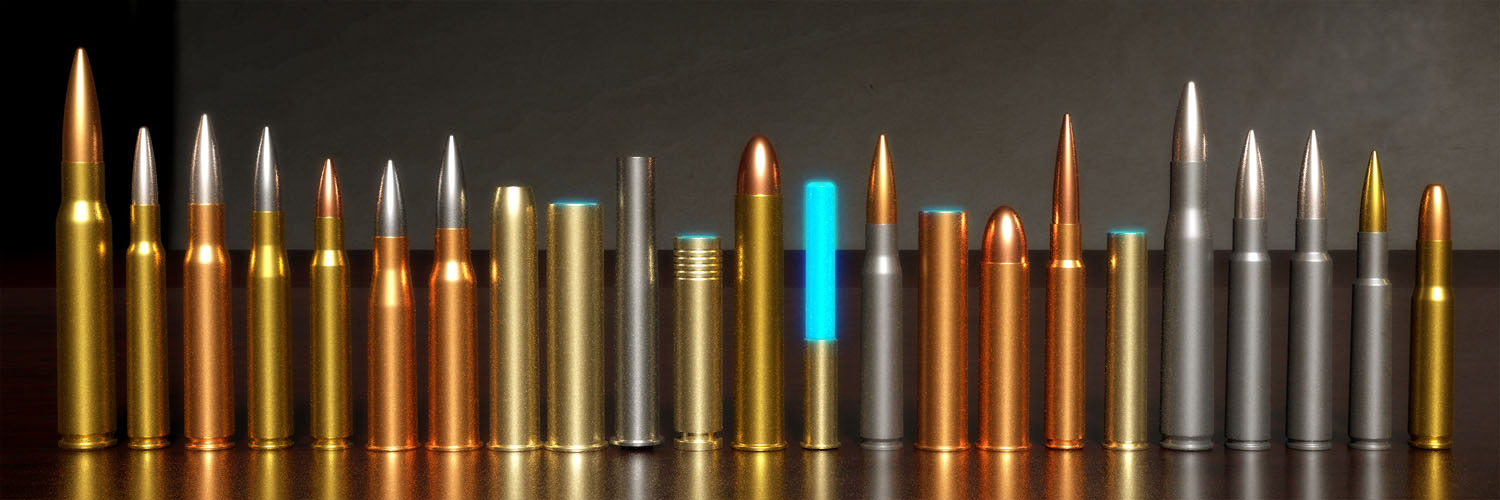
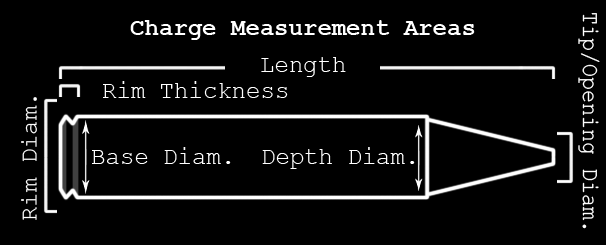
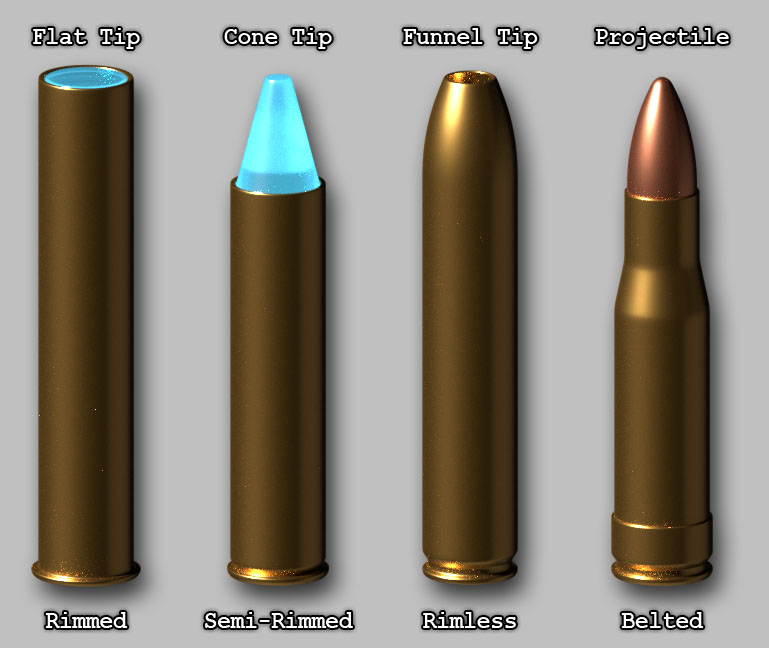
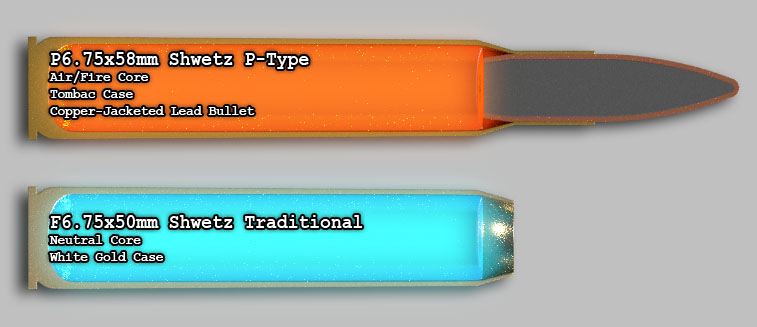
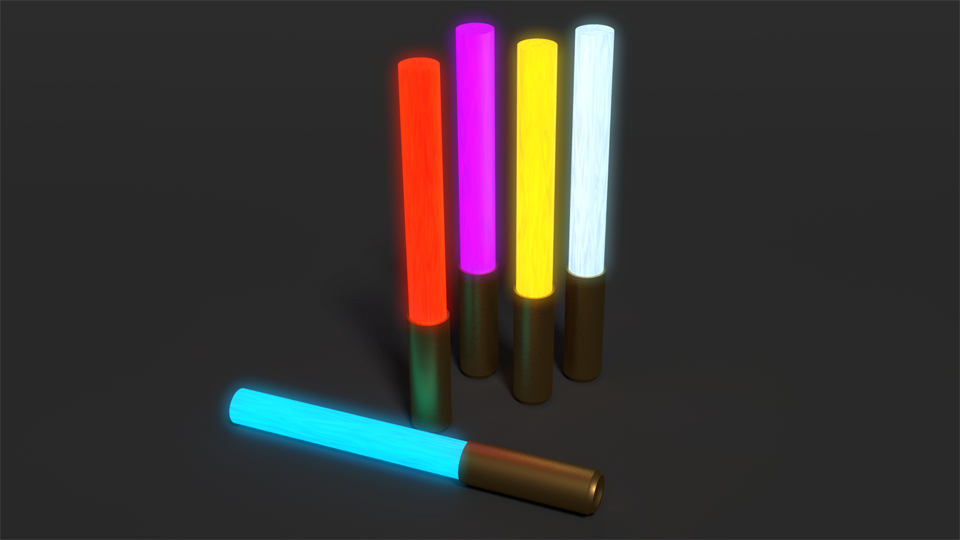
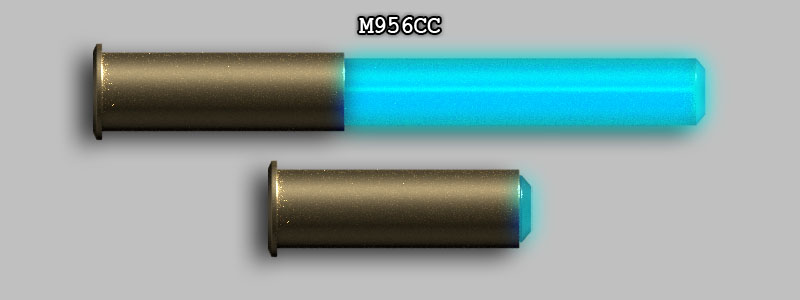
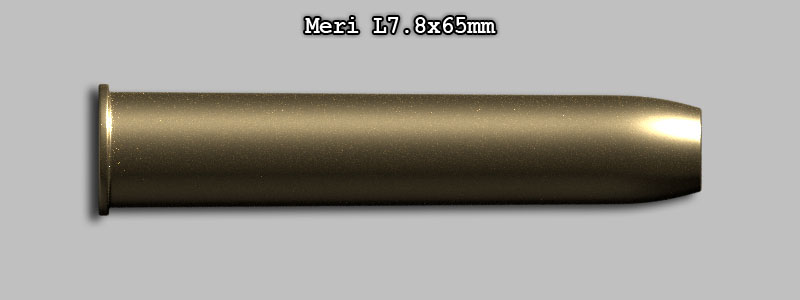
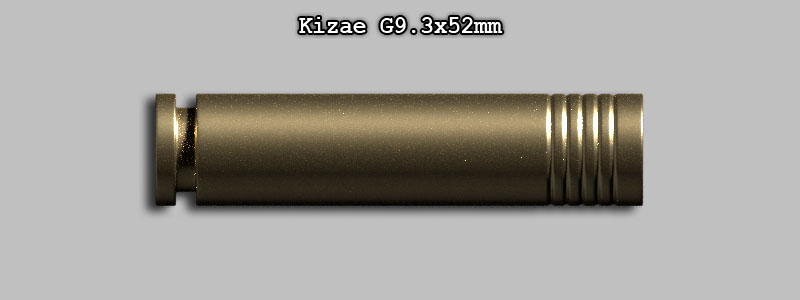
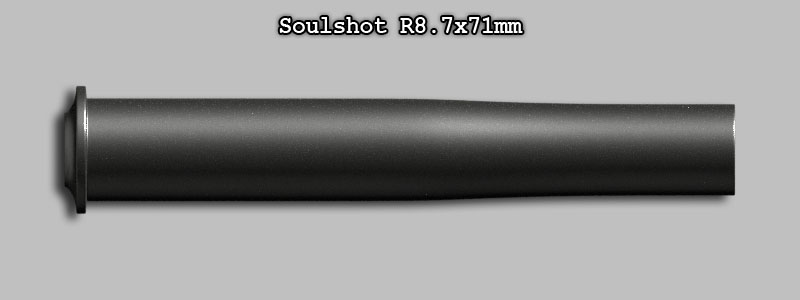
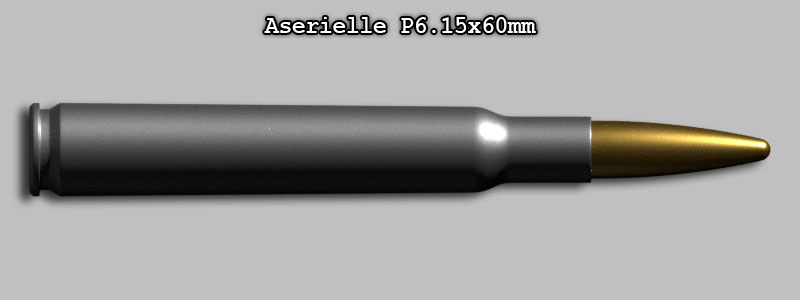

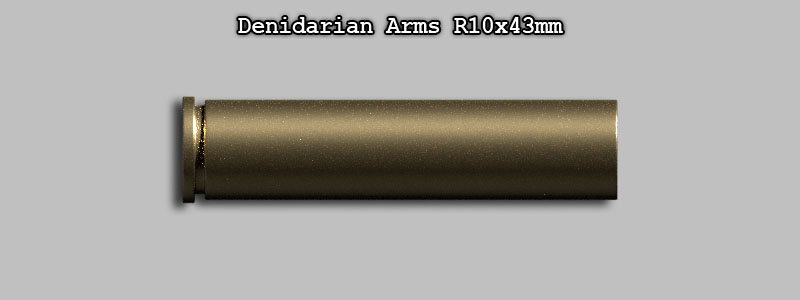
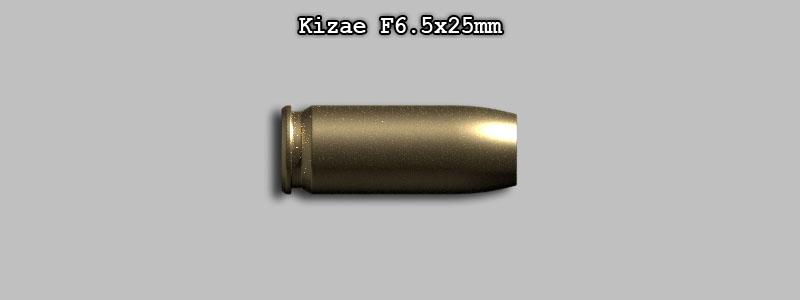
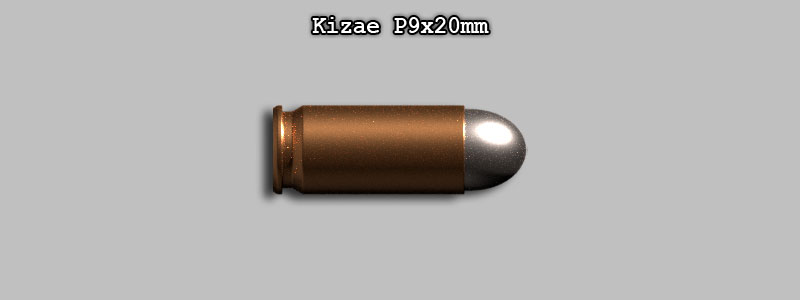
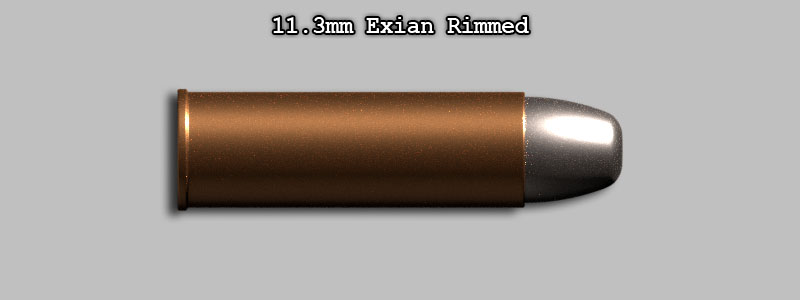
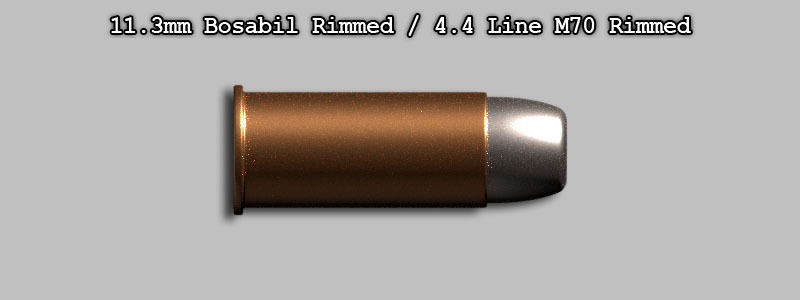
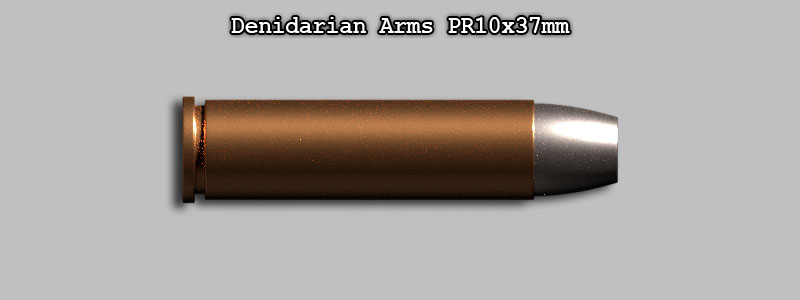
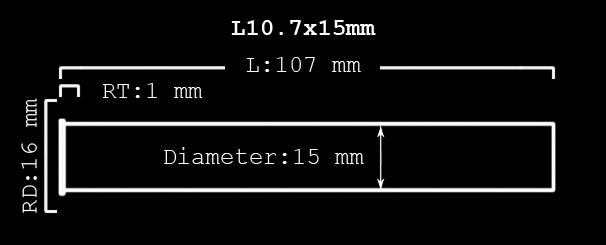



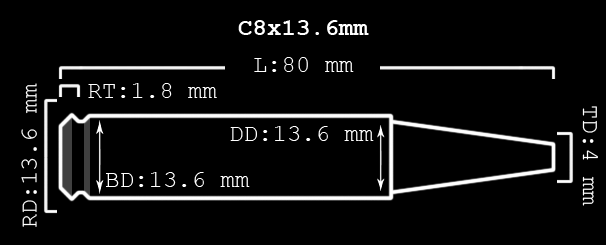
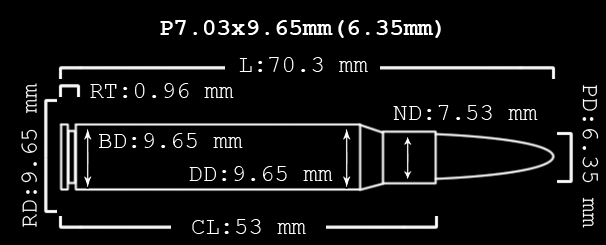



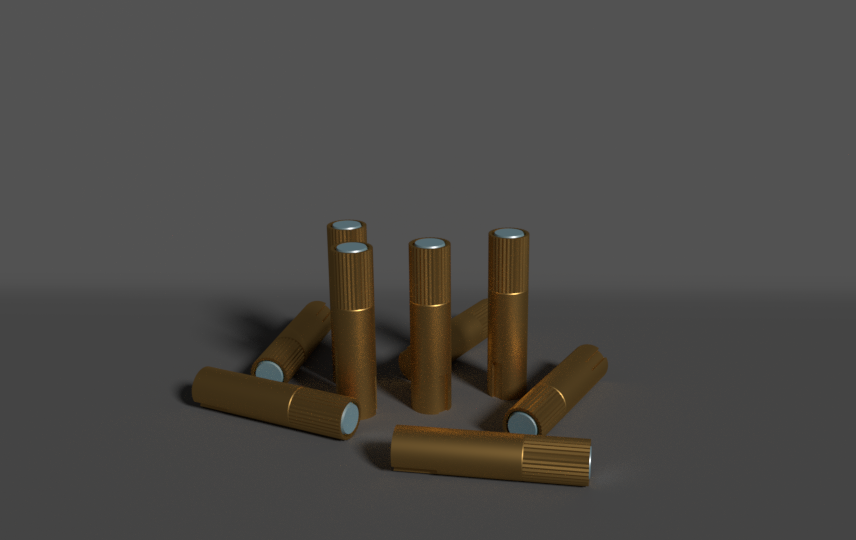

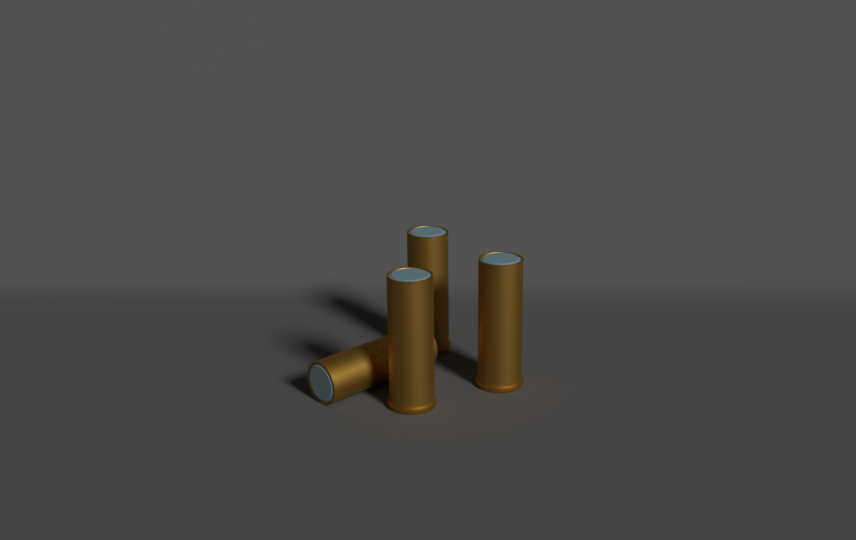

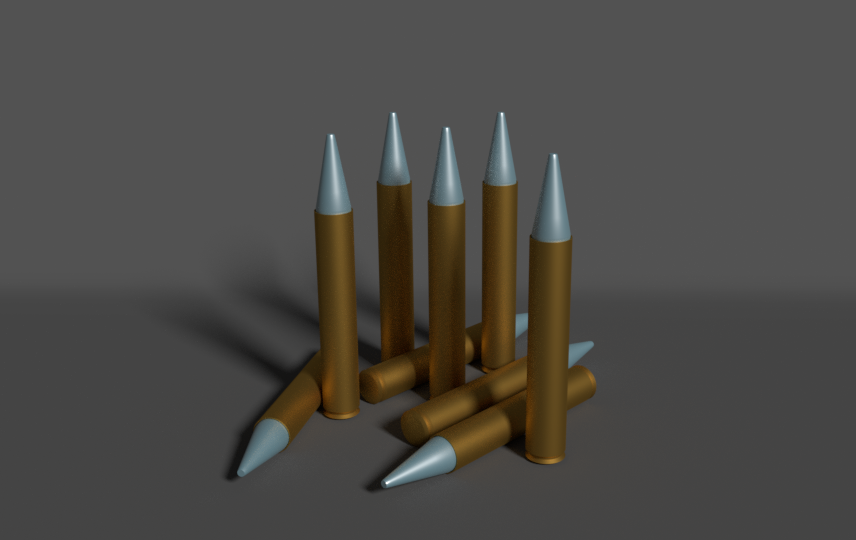

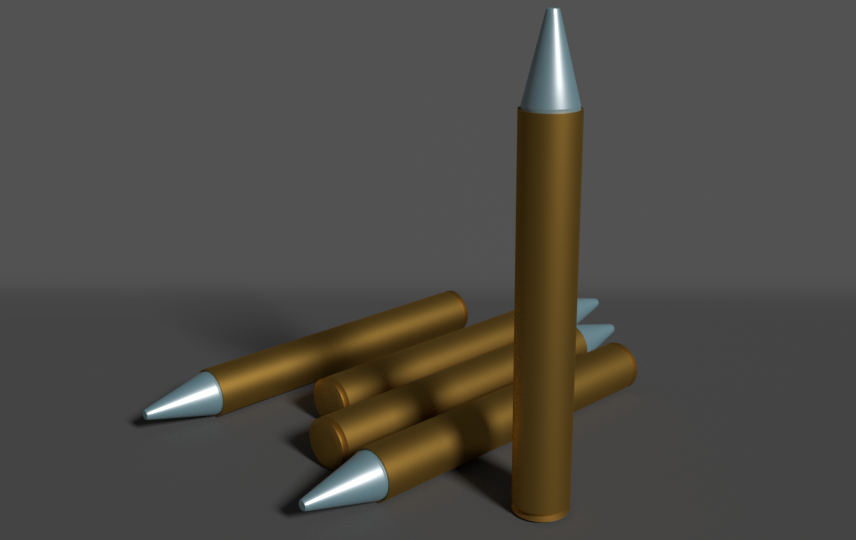







I love how much thought went into this, gives me inspiration for my own magic crystal bullets :D